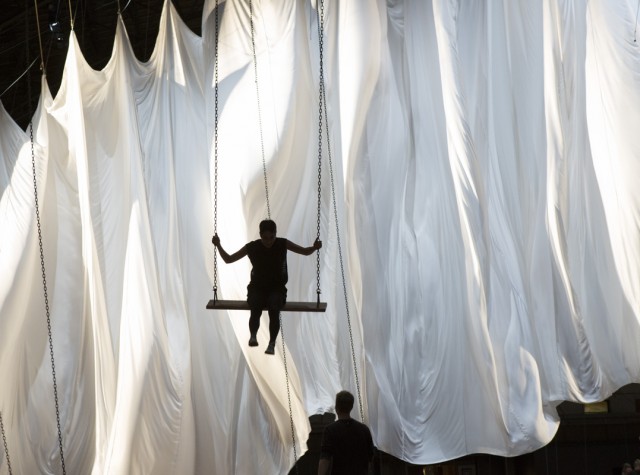EYJAFJALLAJÖKULL
(pronounced like this)
EYJAFJALLAJÖKULL from ANTIVJ is a visual label on Vimeo.
I was introduced to projection mapping when my architecture major roommate mentioned it to me last semester during our daily swapping of class stories when we weren’t too tired. I saw couple of videos on what she meant by “projection mapping,” and I was mind-blown. Maybe it was my incredible love for all things cubic and glowing, but I remember looking it up a lot online and recalling an image I saw once that resembled a unique form of projection mapping, which I hadn’t had a name for at the time. I hunted down the image, and then managed to find the video of the work. I’ve since seen that digital landscape in my daydreams. It’s probably my obsession with TRON or Digimon from my childhood creating my bias for the work.
But I mostly admire it because it showed me a future for myself, that I didn’t have to abandon drawing in order for me to engage in abstract computational works that appealed to me. I am at my most comfortable when drawing, but at my most frustrated mode at the same time because my ideas feel dead to me when I practice the craft. I am at my most uncomfortable when coding, but at my most enlightened mindset at the same time because these ideas feel fresh and tingly. To combine both crafts like Lemercier did–to invite someone to a space that recurs in my head, to an imagined, otherworldly environment that I feel free to draw but caged when trying to “render” it–is powerful and inspiring.
Since another thing I’m passionate about is game design, Lemercier’s work presents opportunities in projected gaming space, not just a virtual reality, restricted by four corners of a monitor. I am interested in what abstract visual games like The Sense of Connectedness (Michael Brough) or flOw (Jenova Chen) would look like when projected not in front of you, but all around you, so that it is not merely a projection but an environment. I’m pretty sure Lemercier did not have gaming in mind when creating this project, but it’s been cooking in my mind for a while now. It doesn’t even have to be for games though; just imagine this kind of unearthly landscape (yet familiar to us) surrounding your every being. You aren’t just viewing it, you’re there on the precipice, about to fall into the abyss (that sums up my Grand Canyon experience).
In terms of manpower, it seems the installation was entirely done by Joanie Lemercier with additional help from AntiVJ, a group of five artists and one musician. Lemercier came up with the concept and drew the landscape and directed the lights; the artist from AntiVJ, Simon Geilfus, helped with the visuals. Nicholas Boritch, another artist from the self-proclaimed visual label, helped with the production and coordination in order to make the installation happen.



